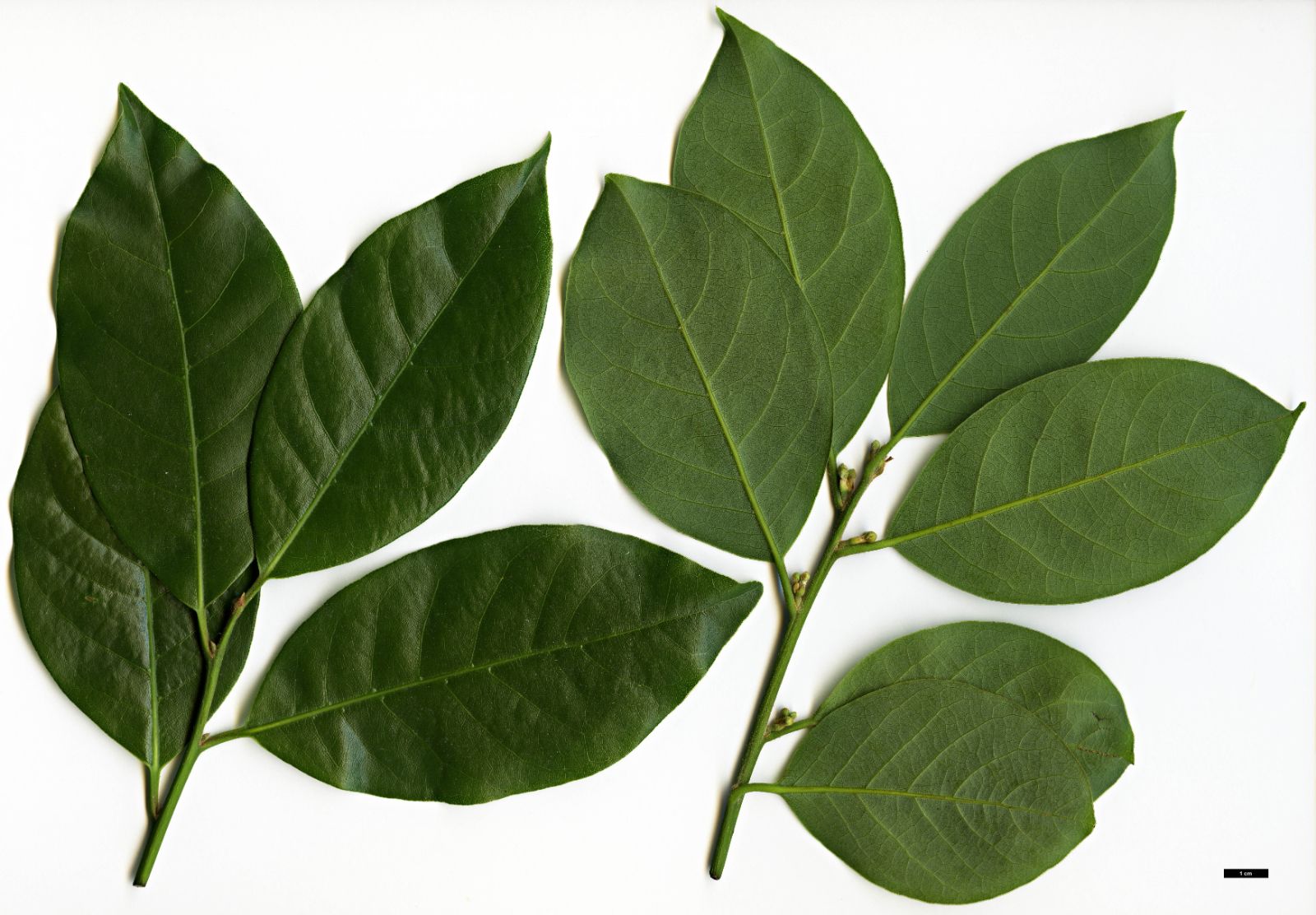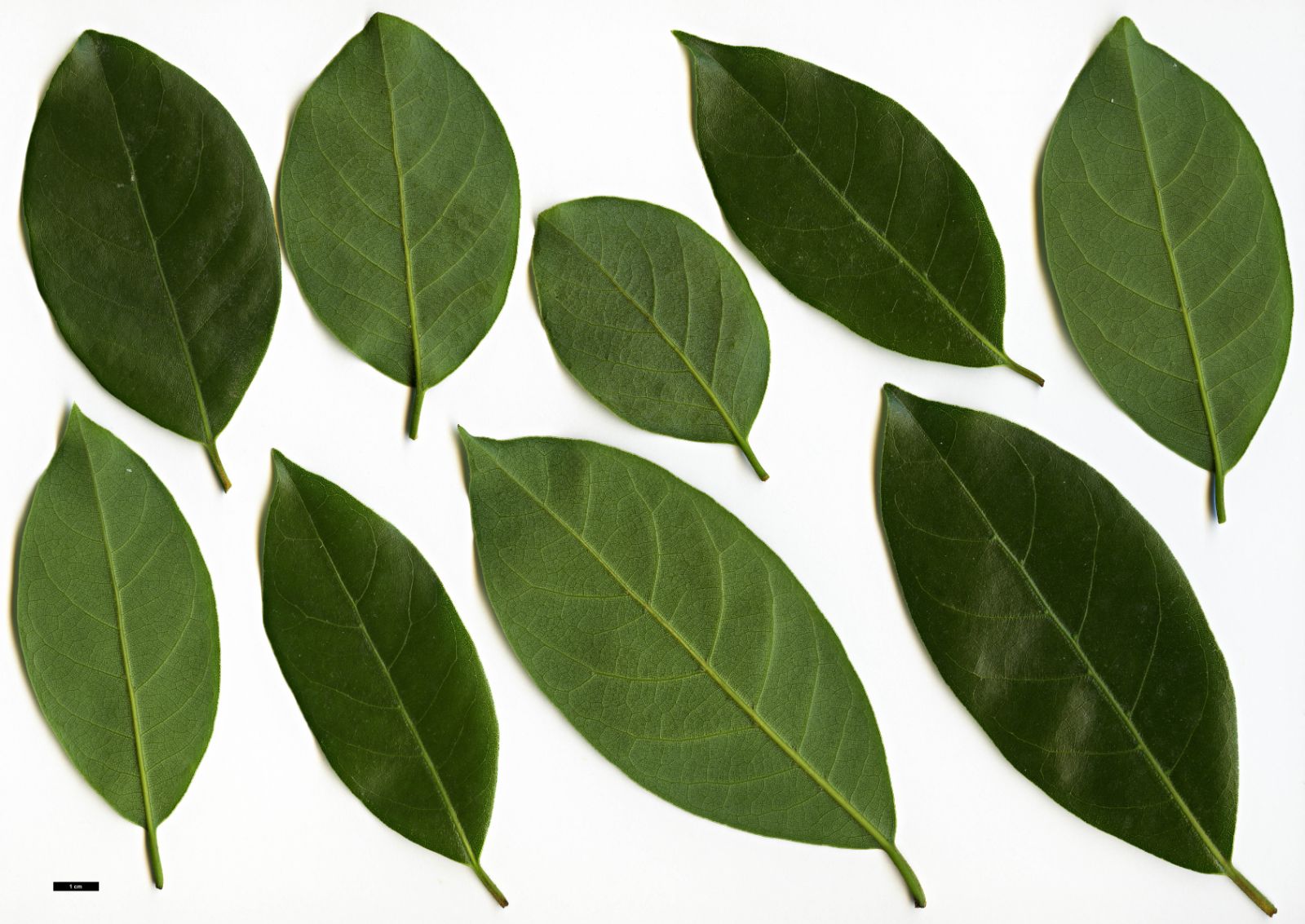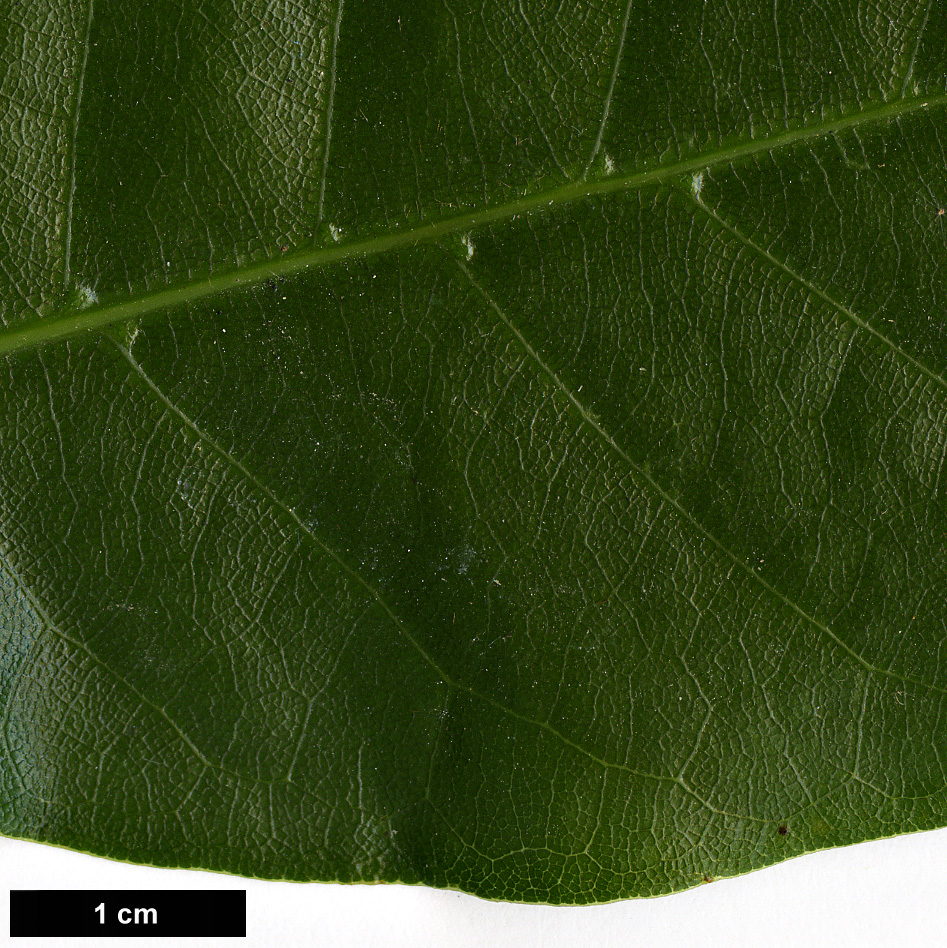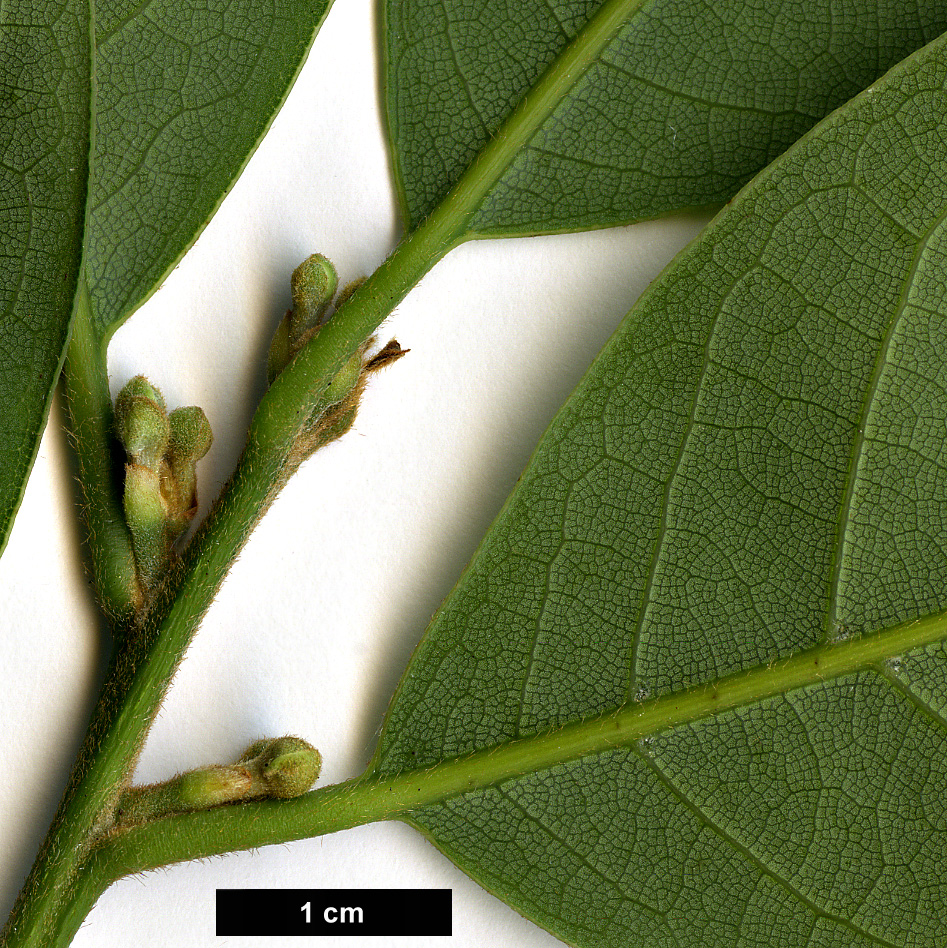Laurus azorica
Credits
Article from Bean's Trees and Shrubs Hardy in the British Isles
Recommended citation
'Laurus azorica' from the website Trees and Shrubs Online (treesandshrubsonline.
Genus
Synonyms
- Laurus canariensis Webb & Berthelot, not Willd.
- Persea azorica Seub.
An evergreen tree up to 60 ft high in the wild, with a trunk 2 to 3 ft in diameter; young shoots dark purplish brown, downy, giving off a pleasant aromatic fragrance like that of the common bay laurel when crushed. Leaves similarly aromatic, alternate, firm and leathery, ovate or oval, abruptly pointed or with a short slender point, wedge-shaped to rounded at the base, 21⁄2 to 5 in. long, 2 to 3 in. wide, lustrous dark green and glabrous above, pale, dull, conspicuously veined and more or less hairy especially on the midrib beneath; stalk 1⁄4 to 1⁄2 in. long. Flowers 3⁄8 in. wide, pale greenish yellow, produced in April on short, downy-stalked umbels in the axils of the leaves of the previous summer. The perianth has four segments with down on the back; stamens usually sixteen to twenty. Fruits egg-shaped, 1⁄2 in. long, each borne on a stout stalk 1⁄4 in. long.
Native of the Canary Islands and the Azores. This fine evergreen is hardy in the southern and western maritime counties and in localities with a similar climate. It is cultivated at Lanarth and Caerhays in Cornwall and at Abbotsbury in Dorset. The tree is unisexual, the male flowers with their numerous stamens being the more ornamental. On large old trees the leaves appear to be comparatively narrow, longer and more lanceolate in outline than in the younger cultivated ones. This species differs from L. nobilis, a much hardier one, in its leaves being much larger and in its twigs being downy.
The two examples at Caerhays are 50 ft high, and the single-stemmed plant has a girth of 51⁄2 ft (1971).
From the Supplement (Vol. V)
specimens: Abbotsbury, Dorset, 35 × 31⁄2 ft (1980); Caerhays, Cornwall, two specimens about 50 ft high (1971).











